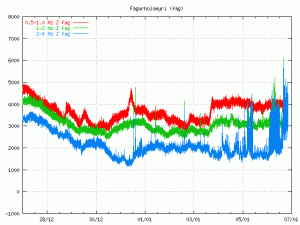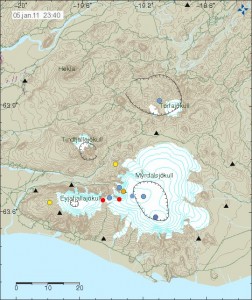A magnitude ML3.8 earthquake has hit Kverkfjöll volcano. This earthquake had the depth of 14,4 km according to the automatic SIL system.
This earthquake appears to have triggered earthquakes in Grímsfjall volcano. But two earthquakes appeared imminently after the ML3.8 earthquake in Kverkfjöll volcano. – This is not the case, the earthquakes happened before (09:06 UTC) the ML3.8 earthquake in Kverkfjöll volcano.
I have been going over the reviewed data on this earthquake. The web site EMSC is reporting this to be a ML4.0 earthquake that took place at 09:22 UTC, with the depth of 10 km. While IMO is reporting this earthquake to have the size ML4.2 (depth unkown). There was a earlier earthquake that took place at 09:06 UTC, it has has the size of ML3.5 (depth unkown). Both of this earthquakes took place in Grímsfjall volcano. There is a good chance that Icelandic Met Office is underestimating the size of this earthquake, given the data from EMSC and the fact that this earthquake was recorded on remote seismometer networks in Europe.
I am going to post updates on this if anything more happens.
Text updated at 09:49 UTC on 13th January 2011.
Text updated at 10:21 UTC on 13th of January 2011.
Text updated at 12:55 UTC on 13th of January 2011.


